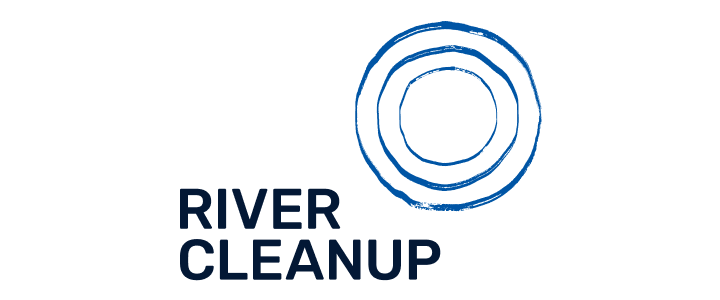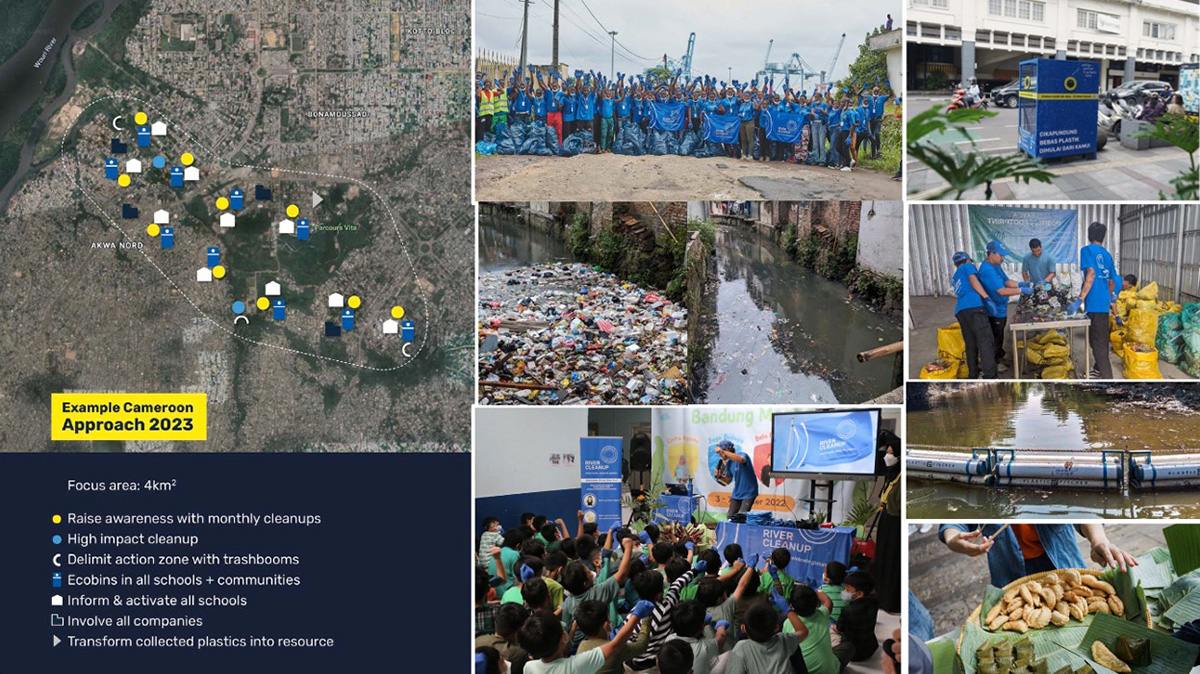General Description
The Clean River Model is a holistic approach developed by River Cleanup, specifically tailored to address the multifaceted issue of river plastic pollution. It’s a structured framework evolving from their experience and best practices in the field and supported by academic research. It’s designed to be adaptable and scalable, making it suitable for different contexts and regions.
The Clean River Model works on 3 main pillars, each with 3 sub-pillars:
- Empower People: Aligning with River Cleanup’s mission to engage and empower people, the model focuses on educating and mobilizing youth and communities, fostering a sense of responsibility and active participation in combating plastic pollution.
- Awareness: This sub-pillar focuses on creating and executing local awareness campaigns that generate enthusiasm and encourage community members to recognize the problem of plastic pollution, empowering them to become part of the solution.
- Activate Schools & Communities: This sub-pillar aims to integrate plastic pollution and possible solutions into school curricula and community programs, fostering a culture of environmental stewardship among students and community members.
- Ownership of Local Leaders: This sub-pillar focuses on identifying, training, and supporting local leaders, enabling them to spearhead effective plastic pollution reduction and River Cleanup activities within their communities. It aims to build local capacity and ensure the sustainability of environmental efforts.
- Prevent Pollution: It addresses the source of the pollution by advocating for reduced plastic use, better waste management, and actively cleaning rivers and riverbanks, thus preventing waste from eventually reaching the ocean.
- Reduce, Re-use, & Substitute: This sub-pillar targets the root causes of plastic pollution by enabling actionable changes in consumption/usage patterns. Unlike the broader educational focus of the Empower pillar, here the emphasis is on implementing specific, sustainable solutions and alternatives to single-use plastics. Collaborating closely with local businesses and leveraging community engagement, this approach fosters tangible reductions in plastic use and waste.
- Preventive Collection: This sub-pillar emphasizes proactive measures to intercept and collect plastic waste before it can reach and pollute rivers and riverbanks. The interventions target the reduction of plastic pollution by enhancing local waste management infrastructure and community engagement. By making recycling more accessible and rewarding, it aims to decrease the volume of waste that could potentially enter rivers.
- Clean, Recover, & Allocate: This sub-pillar focuses on the direct action of cleaning rivers to remove pollution, recovering plastics and other materials for recycling & repurposing, and ensuring the sustainable allocation of these resources. It encompasses a broad range of activities from physical clean-up efforts to the inclusion of trash barriers to intercept floating waste, aiming to minimize the environmental impact of plastics.
- Accelerate Change: River Cleanup has identified change drivers that, if accelerated, will speed up the societal shift toward reducing plastic leakage into rivers.
- Policy and Regulation: Facilitate the development of new or changed policies that further reduce the risk of or actively prevent plastic leakage into nature.
- Corporate compliance: Provide clarity and credibility to compliance requirements derived from legislation, quantify them, and provide metrics that display the level of compliance for subjects to these requirements
- Leverage our network: Expand the reach and increase the scalability of the Clean River Model by actively engaging and collaborating with like-minded organizations, both nonprofit and for-profit.
For the INSPIRE project our activities will mostly focus on the Empower & Prevent pillars – except for the Local Leaders sub-pillar We will also not engage in Accelerate activities as this pillar is still in the early development stage and falls out of scope for the INSPIRE project.
With the help of the partners within INSPIRE, we hope to finetune the Accelerate pillar and look for potential collaborations beyond the project. As mentioned before, the Clean River Model is holistic and adaptable, which means we look at the local context and identify the specific needs of the area.
The Schelde and Rhine case will be used as the high-income country validation of the Clean River Model. Which means, for example, that our efforts on enhancing waste management will be minimal as there is already good waste management in place.
INSPIRE partner responsible for implementation:
River Cleanup
Belgium

- Goal: Detection, Collection & Prevention
- Target Litter: Litter and macro-plastic on river banks
- INSPIRE Use Cases: Scheldt, Rhine
- Contact: Arno Doggen
- Email: arno@river-cleanup.org
- Website: river-cleanup.org
